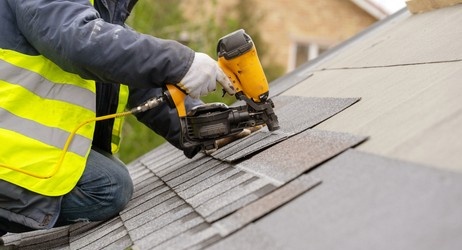As a homeowner, one of the most important decisions you'll make is choosing the right roofing material for your house. Not only does it affect the aesthetic appeal of your home, but it also plays a crucial role in protecting your family and belongings from harsh weather conditions. With so many options available in the market, it can be overwhelming to select the best one for your needs. That's why we've compiled a comprehensive list of the top 5 types of residential roofing materials to help you make an informed decision.
Each type of material has its own unique advantages and disadvantages, such as durability, cost, energy efficiency, and maintenance requirements. For instance, asphalt shingles are affordable and easy to install, while metal roofs are highly durable and energy-efficient. By considering various factors, such as your budget, weather patterns in your area, and architectural style of your home, you can narrow down your options and choose the most suitable roofing material.
Residential Roofing Materials
Residential roofing materials come in a wide range of options, each with its own unique benefits and drawbacks. As a professional in the roofing industry, it is important to understand the different types of roofing materials available and their suitability for different applications. Some of the most popular residential roofing materials include asphalt shingles, metal roofing, clay or concrete tiles, and wood shakes. Each material has its own set of advantages in terms of durability, aesthetics, and cost. For example, asphalt shingles are affordable and easy to install, while metal roofing is highly durable and energy-efficient. Being knowledgeable about these materials can help roofing professionals make informed recommendations to their clients and ensure that they use the most appropriate materials for each project.
Asphalt Shingles
Asphalt shingles are the most commonly used roofing materials in North America. They are made of a fiberglass mat coated with asphalt and granules. Asphalt shingles are known for their durability, affordability, and easy installation. They come in a wide range of colors and styles, including architectural and 3-tab shingles. They are also resistant to fire, wind, and algae growth. If properly installed and maintained, asphalt shingles can last for decades. It is important to choose high-quality asphalt shingles and hire a professional roofing contractor for installation. Regular inspections and maintenance can extend the lifespan of asphalt shingles and ensure the safety and effectiveness of the roof.
Tile and Concrete Roofs
Tile and concrete roofs are two popular roofing options that have been used for centuries. Tile roofs offer a classic, elegant look that can add significant value to a property. They are durable and long-lasting, with a lifespan of up to 100 years. Concrete roofs, on the other hand, are more affordable and can mimic the look of other materials such as wood, slate, or tile. They are also extremely durable and can withstand harsh weather conditions. When considering which type of roof to install, it is important to take into account your budget, the style of your home, and the climate in your area.
Wood Shingles and Shakes
Wood shingles and shakes are popular roofing materials that have been used for centuries. Shingles are thin, rectangular pieces of wood that are tapered at one end, while shakes are thicker and have a rougher texture. Both are made from durable woods such as cedar, redwood, and pine, and can be stained or painted to match the aesthetic of the home. When properly installed and maintained, wood shingles and shakes can provide a long-lasting, attractive roofing solution that adds value to a property. However, they do require regular maintenance to prevent rot, mold, and insect damage. Homeowners considering wood shingles and shakes should consult with a roofing professional to ensure proper installation and maintenance.
Flat or Low Slope Roofs
Flat or low slope roofs are becoming increasingly popular in modern architecture, especially for commercial buildings. These types of roofs offer several benefits, including cost-effectiveness and energy efficiency. Flat roofs are easier and less expensive to install than pitched roofs, as they require fewer materials and less labor. Additionally, because flat roofs don't have to contend with gravity like pitched roofs, they can be designed to support rooftop gardens, solar panels, and other green initiatives. However, it's important to note that flat roofs require regular maintenance and inspection to prevent water damage and leaks, particularly in areas with heavy rainfall or snow. Quality installation and proper maintenance are crucial to the long-term success of a flat or low slope roof.


No comments yet